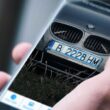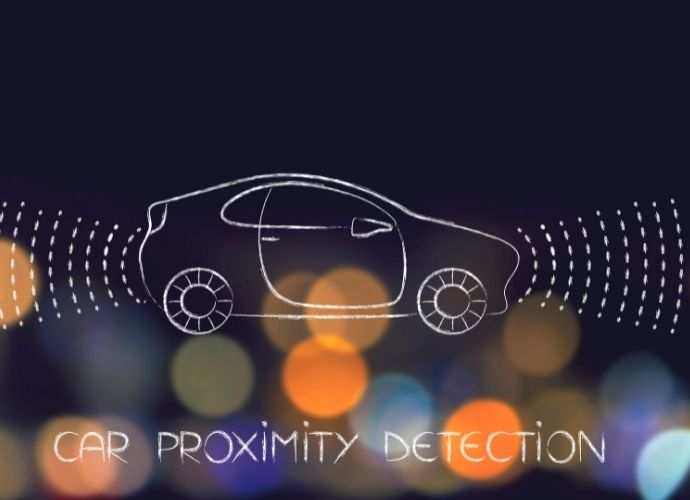The world is getting obsessed with the idea of smart cities. The entire concept of having smart automated energy systems, one-touch access ports, and electrical grids has grappled scientists and commoners alike for some time. Data scientists, in particular, have always been enthralled by the advancement of the smart city concept in various cities around the world.
Automated traffic management is one of the crucial components that together are necessary to implement the smart city concept. Moreover, data science chops can help build intelligent vehicle detection models that could lead the smart traffic management.
When we say smart traffic management, it isn’t just a system to control traffic lights; rather, it’s a much complex and integrated system that can effectively be used to achieve various goals, including;
- Vehicle counting – counting the number of vehicles passing through a traffic junction
- Traffic Routine – identifying the traffic build-up time at different traffic junctions
- Vehicle Type Detection – Segregating different types of vehicles crossing through a traffic junction (cars, trucks, etc.)
- Pattern Identification – identifying the traffic pattern and finding out ways to optimize traffic distribution for better management
And much more. There are literally endless possibilities and use cases of smart traffic management.
The problem is that as humans, our brains are automatically wired in a way to analyze and identify objects in complex scenes without much difficulty. However, when we try to replicate this process through a machine, it becomes a complicated process. The most crucial element required in this process is to learn the art of object detection through image processing techniques using various computer vision algorithms.
Here in this blog, we will be looking at some of the basic technical concepts involved in the vehicle detection model. We will not be going into details of building algorithms; rather, looking at the core image processing concepts that together help create robust vehicle detection algorithms.
Object Identification in Vehicle Detection Videos
Object detection is a fascinating image processing technique related to the field of computer vision. However, the whole idea gets even crazier when you are dealing with video data. Nonetheless, the increase in complexity also greatly improves the rewards.
We can perform many complex and high-value tasks by mastering the object detection technique for video content, including vehicle detection, fighting crimes, surveillance, and others. Apart from these major tasks, object detection algorithms can also help perform various sub-tasks like object counting (vehicle counting), estimating the size of objects, estimating the distance between objects (used extensively in surveilling safe distance during covid-19) and others.
All of the tasks mentioned above come with high utility and help solve real-world problems, which is why data scientists are putting in all their efforts to create robust object detection algorithms.
Below are some of the best tutorials that can help you master the object detection technique from scratch;
– Basic Object Detection Algorithms
– Other object detection articles and resources
– Object detection using SlimYOLOv3
Now, let us take a quick look at some of the real-world applications of object detection.
Practical Use Cases of Vehicle Detection Sensors in Loop Videos
Today, object detection is widely used across various industries to improve process automation and increase operational efficiencies. The practical implementation and use-cases of this high-value field of computer vision range from robot navigation to video surveillance to sports broadcasting and much more.
The best part is that the technology is just started, and there are endless possibilities and use cases for using object detection techniques in the real world. Below are some of the interesting applications of object detection being used across various industries;
- Vehicle detection
- Vehicle counting
- Crowd counting
- Robotics
- Ball tracking
- Traffic management; and
- others
Core Vehicle Counting Concepts you should know!
Ok, now that we are done with the use-cases and idea of object detection in videos, let us now move on to see some of the core concepts that work behind object detection in video data. Learning these core concepts will help you build more insights into the working of object detection algorithms and create your custom detection system for any use case. As we mentioned above, getting into the details of building object detection algorithms is beyond this blog’s scope; rather, we will simply cover some core concepts behind the development of object detection algorithms.
So, let us get started…
When we are looking to track/detect a moving object in a video, the vital element of the task is to capture the object’s coordinates and highlight it in real-time. For instance, when you are building a detection system for vehicle detection, your goal is to identify, highlight and tract the moving vehicle in the video through some bounding box.
Now, all this can be achieved using multiple techniques. For once, you can use a deep learning algorithm (supervised classification) and train it for desired object detection (in our case, vehicle detection). Alternatively, you can also use a pre-trained algorithm (there are multiple pre-trained algorithms available for different use cases) and fine-tune it as per your data. The only requirement in this approach is the availability of structured and labelled data to train the models.
The next approach is to use an unsupervised classification technique for object detection in videos. In this approach, you will not require labelled and structured data to train the model; rather, the model will itself be able to perform vehicle detection or any other object detection using the below-mentioned techniques;
Frame Differencing
Revising the basics of videos, we know that videos involve a set of frames that are stacked together in a specific sequence. To put it in perspective, any moving object in video means that it is present at different locations in each consecutive frame.
Now, if we assume that nothing else but the vehicle in the study is moving in the frame, then it will not be that hard to identify the moving vehicle through pixel differentiation in consecutive frames. This way, we will have the pixels and the coordinates of the vehicle moving in the video, and that is what is referred to as frame differencing.
– Image Thresholding
Image thresholding is another method that can be used to detect a moving vehicle in video data. In this method, the differing pixel values (represented by DN values) can be used to detect and discriminate different objects in a frame. As such, any value above the threshold value will be mapped as a different identity than the rest of the objects and can be used to track a specific moving object in the video consecutively.
End Notes
Well, we hope that you will have learned some basics of object detection in this guide. The whole purpose of this guide is to give you a feel of how object detection algorithms work and what are the concepts behind this hugely popular technique. You can learn more about the development of object detection algorithms using the resources mentioned above or reach out to our experts for the development of custom object detection algorithm.









